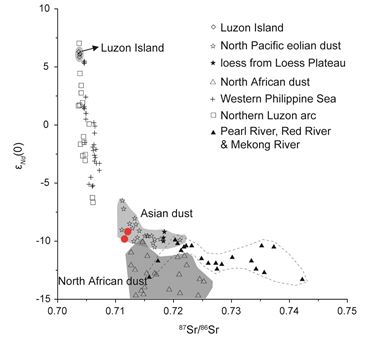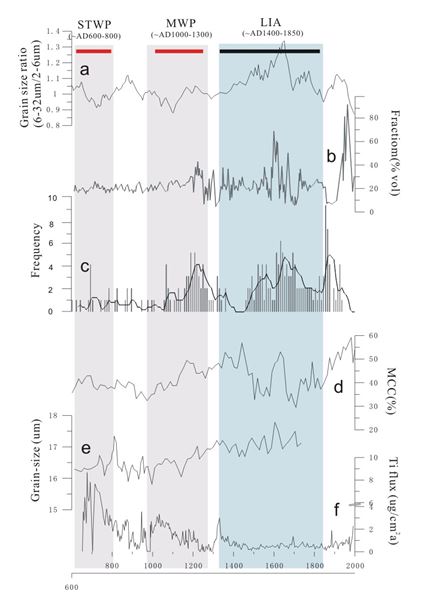It’s said Sherlock Holmes is so good at geology knowledge of London that he could deduce the place you came from just by a simple glance at the mud spot on your trousers. Unlike the famous detector, as a professor in USTC, SUN Liguang and his team, however, deduced the fantastic source of the dust in South China Sea (SCS) after rigorous analysis into the precipitation on Dongdao Isaland, an elliptical island located in the north of SCS. The hometown of the dust precipitation, turned out to be the inland Asian. The dust travelled through the whole continent by dust storm.
The concentration of Ti, Al and the acidic insoluble particles in the lacustrine sediment core (DY6) collected in Dongdao Island play critical roles in SUN’s analysis. Results of element analyses indicate that the concentration of Ti and Al in DY6 are much higher than the background on the island. Morphological characteristics of acidic insoluble particles are similar to aeolian in East China. What’s more strange, Sr and Nd isotope compositions in these particles are consistent with those in Asian aeolian dust. Just like the quote from Holmes, “When you have eliminated all which is impossible, then whatever remains, however improbable, must be the truth”. Therfore, Professor SUM and his team has inferred that dust in DY6 may have been transported by East Asian Winter Monsoon (EAWM) from inland Asia.

Isotopes results of Sr, Nd in Asian, Africa terrigenous dust and SCS sediment; red points stand for the terriugenous source of the Dongdao lacustrine sediment core
Based on the measured Ti flux, the continuous dust records for the past 1400 years in North SCS were also presented. Based on these data, they established the evolutionary trend of East-Asian winter monsoon in the past 1400 years. It’s the first proof that the dust from inland Asian could be transported to the Xisha Islands, by special transportation provided by the East Asian Winter Monsoon.

a,b,c,d,e are the dust or dust storm records in mid and high latitudes regions of East Asian for the past 1400 years; f is the record of Dongdao Island.
The paper has just be published on
May 16th of Scientific Reports, the first author is Doctor YI Liu. This is not the first time for SUN’s team to unveil surprising results by research into seemingly unrelated materials. In 1998, SUN and his students went to the Antarctic Pole to search for sediments influenced by penguin droppings. Two years later, their paper released in Nature has been recognized as a new way to investigated penguins ecological archaeology. In 2003 and 2008, they search intoprecipitation in Xisha Islands also resulted in an astonishing new understanding in the mechanism of climate change in tropical Pacific region.
Today, the 69-year-old SUN is still working the scientific research front. With his novel methods, he and his team would unveal much more mysteries, just like the vigorous Holmes after extraordinary cases.
(QIU Zengwei, USTC News Center)